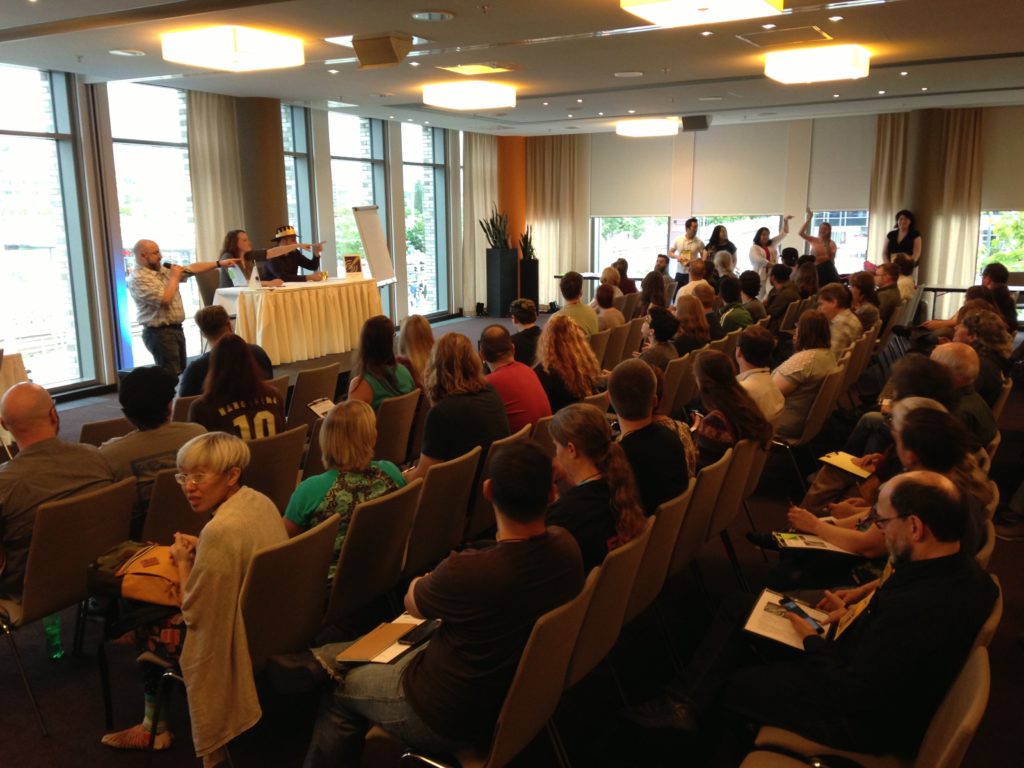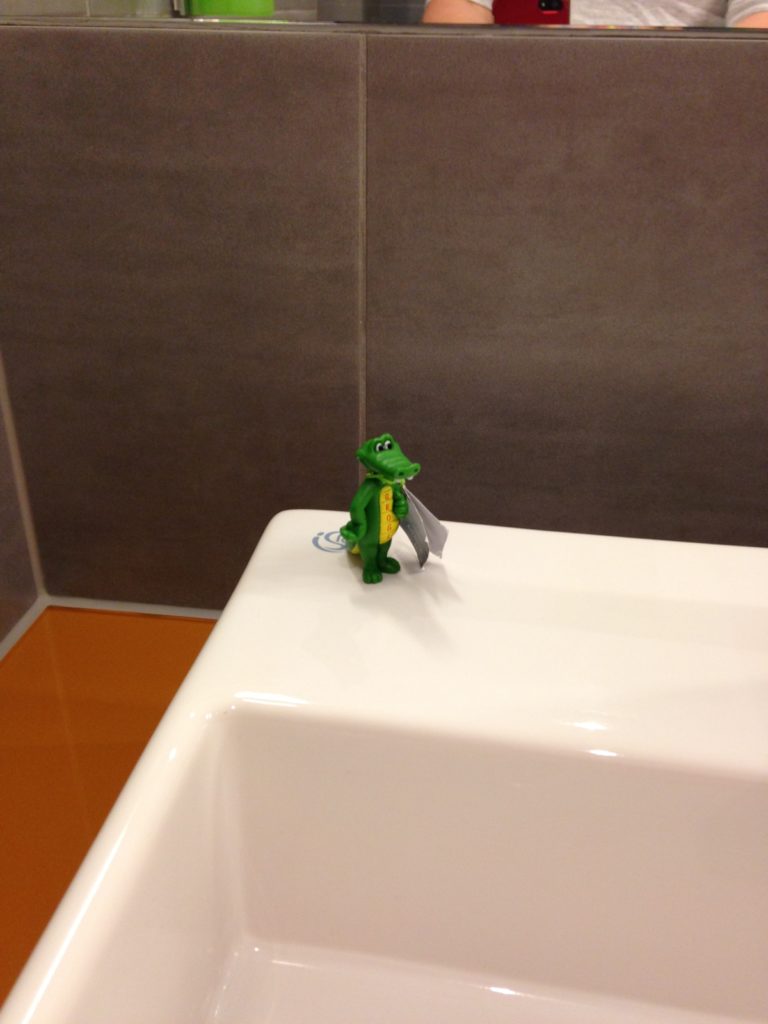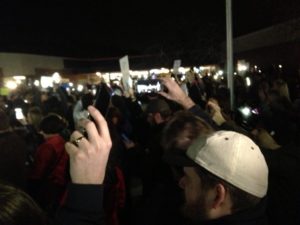The class was billed as being about digital addictions, but it turned out to be far more generally useful and less alarmist than the description made me fear. It was taught by Dr. Ryan Anderson, who wrote a book on the topic Navigating the Cyberscape: Evaluating and Improving our Relationship with Smartphones, Social Media, Video Games, and the Internet. It was the second such class, though I’d missed the first session which delved into the neuroscience of how digital media can create the same biological and neurological responses as chemical addictions. The second session focused on recommendations for what to do about the potential for addiction, or how to manage an addiction which exists. It was a topic that fascinated me, because there are folks in the Tayler household who are a bit too attached to their screens. Yet I approached the class with quite a bit of anxiety, very afraid that the teacher would propose solutions that would require me to upend our family’s coping strategies. That was not what he said.
The first thing the lecturer told us was that video games, social media, television shows, etc are not inherently evil. They have great potential to make our lives better, and probably already have. Second he clarified that while a digital detox can be useful to expose which of the digital media in our lives are problematic, detox isn’t an effective means to break an addiction. The core problem with digital addictions is not the existence of digital things in our lives, but that we’ve allowed our lives to get out of balance so that the digital things take up too much space. The fix is to find ways to balance your life, to make sure that you’re being mindful about the choices you make and intentionally choosing digital things only when they enhance your life instead of from habit or dependence.
One of the things he went over at length was how much time we should be spending on screens for optimal enjoyment. The golden zone appears to be 1-3 recreational hours per day. (Note that time on screens for work or school doesn’t count in those hours. It engages the brain differently.) People in my house routinely spend five hours per day (often more) on screens. But the teacher didn’t recommend the sudden imposition of a time limit, because time limits provoke battles. Instead he gave a long list of things which help us to bring balance into our lives, and to combat the patterns of shallow thinking which are the natural result of prolonged social media and sound bite exposure. I’ll list some of these suggestions below.
I wrote notes throughout the class. I do think that the lecturer had a strong bias to view digital media and games as more dangerous/addictive than they are to most people. This bias is the natural result of the lecturer working with and studying autistic populations who are particularly vulnerable to video game addictions. Yet I saw great value in his list of suggestions. When class was over and I transcribed the notes, I picked two things to apply in my life. This too was part of the class, he warned against attempting a major overhaul of our lives. Pick one or two small changes and let them settle before picking one or two more.
The two changes I decided to start with for myself were implementing a one-screen-at-a-time rule. If I am watching a show, I don’t need to be playing a game on my phone at the same time. If the show isn’t sufficient to hold my interest by itself, then I should do something else. I also want to consciously practice giving my full attention to a single thing rather than partial attention to multiple things. The second change is to spend the hour before bed away from screens. I don’t need to be checking on the status of internet things right before bed. Those things will be there in the morning. Looking at them in the morning is less anxiety inducing because I have the time and energy to take action, whereas at bedtime I just end up stewing on things. Then there is the science which says the light from screens can disrupt sleep patterns. The one caveat I’m allowing for me is if I’m watching a show or movie with someone else on the big family TV. That may happen before bed some days.
Interestingly, though I’m only imposing two rules on myself, I’ve discovered that some of the other suggestions have been implemented as well. Just knowing what they are helps me make more conscious choices in my relationship to technology. I haven’t imposed any rules on the other members of my household, but I’ve talked to them about the lecture and about the shifts I’m making for myself. I’ve already seen some of them begin making more conscious choices as well.
I think I may buy Dr. Anderson’s book and read it in detail. The suggestions I took notes on are covered in there. And I’m certain I missed writing notes on some good suggestions.
List of suggestions for improving life balance:
The so-so solution that someone will actually do is better than the ideal solution that someone won’t try. Take any step that inches you closer to a healthy balanced life. You can take further steps later.
Read a physical book. The tactile experience associated with paper focuses the brain differently. Some of us need to re-train our brains to engage with the slow unfolding of story and language.
Learn to wait without needing a distraction, watch your surroundings and pay attention to your thoughts about them. Learn to sit with boredom and see what thoughts come to you.
Make something with your hands (can be a puzzle or playing with magic sand)
Sketch, paint, or color
Pay attention to others needs and do something to help without being asked
Make a practice of thanking others, either out loud or in writing.
Cook from scratch
Meditate
Make amends
Have tech free time every single day
Only use one screen at a time
Go for a walk, or get outside, or watch a sunset. Do something slow which brings you into contact with outdoors or nature.
Do something to make your living space cleaner
Don’t begin a session of video games or social media until you have a plan for when it will end and what you will do afterward.
Plan a head and do full days with no tech.
Have an hour before bed with no screens
Before you google, think, question, hypothesize, experiment, explore, discuss
Limit tech locations, make sure you have tech free spaces in your life.
Have at least one tech free day per month.



 I watched Jaws a couple of days ago. I haven’t seen it in years. There were moments when it really had me tense and other moments where I could see exactly how fake the mechanical shark looked. The scene that sticks in my mind is the one with all the people splashing and playing in the water while the music plays its ominous theme. The new year feels a bit like that to me. From this moment I have no way to know if I’m going to get a pair of kids with a shark fin that scared me for no reason, or if there will be blood and guts in the water. I don’t like feeling this way about the coming year.
I watched Jaws a couple of days ago. I haven’t seen it in years. There were moments when it really had me tense and other moments where I could see exactly how fake the mechanical shark looked. The scene that sticks in my mind is the one with all the people splashing and playing in the water while the music plays its ominous theme. The new year feels a bit like that to me. From this moment I have no way to know if I’m going to get a pair of kids with a shark fin that scared me for no reason, or if there will be blood and guts in the water. I don’t like feeling this way about the coming year. 
